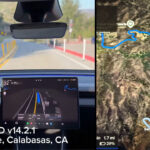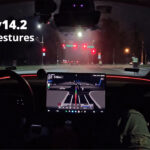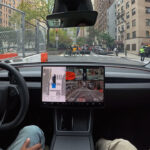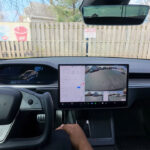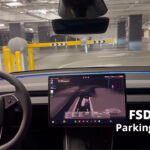It has been around a month since Tesla (TSLA) launched its Autopilot Full Self-Driving (FSD) in China.
Chinese Tesla owners have been extensively testing FSD in the country, putting it through almost every scenario and terrain possible.
However, some Tesla owners have taken it to the extreme. In some of the new videos, Tesla FSD in China has been seen self-driving on dangerous and risky roads like mountains, cliffs, tunnels, and even a river-crossing bridge on the damn (videos below).
Although Tesla FSD is facing some regulatory hurdles in China right now, the system will be back and these videos are still worth the watch.

Although major Chinese cities are fully developed, there are suburbs and other cities with less-developed road infrastructure. As we previously reported, Tesla FSD is already performing well on unmarked Chinese roads.
Tesla FSD’s ability to run smoothly on unmarked and unpaved roads helps explore unexpected terrains. FSD in China has proven that it can even navigate dirt roads with accuracy. So, Chinese Tesla owners took it to the extreme and put FSD through its most risky testing yet.
Mountains & Cliffs
This is the most extreme level of FSD testing I’ve seen in my 10-year coverage of Tesla Autopilot.
In two different videos, Tesla owners took their cars to the mountains and turned on Autopilot FSD on very narrow mountain roads. A single mistake or unintended acceleration could end in a tumble off the cliff or an accident.
However, these daring Chinese Tesla owners were ready to take the risk. Chinese FSD videos are mostly shared on their native social media like Weibo but ultimately make it to the US on X (Twitter) and other platforms.
FSD Testing Through a Narrow Tunnel
This is not as risky as Tesla FSD going through mountain cliff roads we saw above, but it shows its accuracy when faced with scenarios it hasn’t learned before.
A Tesla owner tried to pass through a narrow, single-lane, short tunnel. FSD first saw a bike coming from the front. FSD stopped for the bike to pass and then approached the tunnel. Understanding the level of difficulty, Tesla Autopilot moved forward slowly and cautiously.
Interestingly, in real life, we get to pass through such terrains when cruising through mountainous regions in South Asia.
Chinese people are using Tesla FSD to the extreme
— DDos SS' (@Dbsrud5585) March 27, 2025
⁰Tesla is acquiring all the data
No one probably realized that extreme testing and vast amounts of data would pile up in China
The Tesla FSD team needs to start adjusting their schedule
⁰All the master plans will be moved up pic.twitter.com/1qZ3tRoOqQ
Crossing A River (Narrow Damn)
These Tesla FSD videos from China are good content for a Red Bull or Mountain Dew ad campaign. We can see no fear in the voices of Chinese Tesla FSD beta testers; rather, they’re overjoyed.
One such Tesla owner took his vehicle to a river crossing. This is also a risky single-lane road that is potentially dangerous for FSD as the self-driving system hasn’t gone through such a terrain before. However, with only cameras and AI, Tesla Autopilot navigated this road perfectly.
However, we don’t know yet how much of a potential safety hazard the FSD system was aware of during these drives. So, use extra caution and stay highly vigilant to take over driving as soon as possible.
Stay tuned for constant Tesla updates, follow us on:
Google News | Flipboard | X (Twitter) | WhatsApp Channel | RSS (Feedly).
Related Autopilot/FSD News
- Tesla FSD v14.2.1 conquers ‘The Snake’ highway in California (hairpin turns, ~30 curves, video)
- Tesla FSD v14.2.1 recognizes hand gestures and proceeds a red light and more (videos)
- License Tesla FSD or face the disruption — Musk once again warns legacy automakers
- Tesla offers 30-day FSD v14 trials to HW4 vehicles in North America, FSD v14.2 goes wide release
- Tesla FSD v14.2 modifies how you select Speed Profiles and Arrival Options
- FSD v14.2 parking lot handling tests give mixed results (videos), Tesla expands the rollout circle

